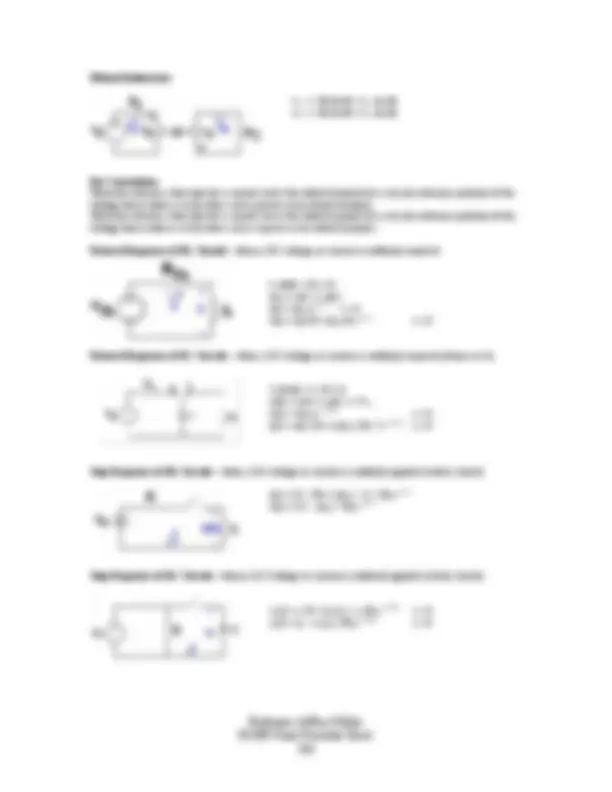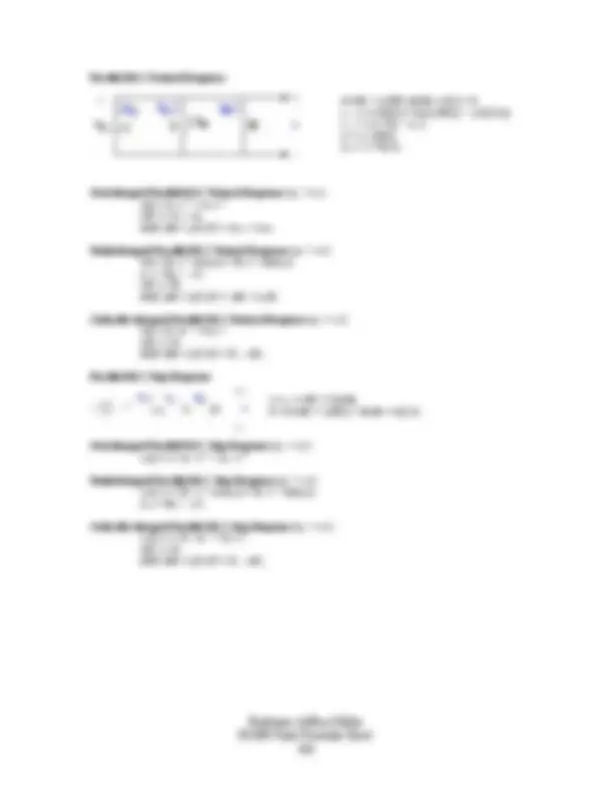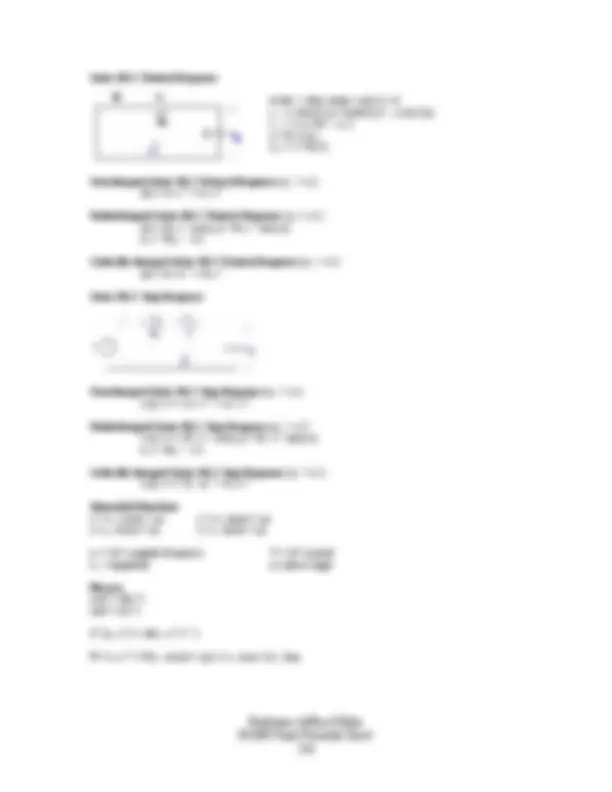





Study with the several resources on Docsity

Earn points by helping other students or get them with a premium plan


Prepare for your exams
Study with the several resources on Docsity

Earn points to download
Earn points by helping other students or get them with a premium plan
Community
Ask the community for help and clear up your study doubts
Discover the best universities in your country according to Docsity users
Free resources
Download our free guides on studying techniques, anxiety management strategies, and thesis advice from Docsity tutors
Material Type: Notes; Professor: Miller; Class: Elements of Electrical Engineering; Subject: Engineering Science ; University: University of Alaska - Anchorage; Term: Spring 2008;
Typology: Study notes
1 / 6

This page cannot be seen from the preview
Don't miss anything!




ES309 Final Formula Sheet
This sheet will be distributed with the exam.
Quantity Unit Name Units Frequency hertz (Hz) s- Force newton (N) kg m / s^2 Energy joule (J) N m Power watt (W) J / s Electric charge coulomb (C) A s Electric potential volt (V) J / C Electric resistance ohm (Ω) V / A Electric conductance siemens (S) A / V Electric capacitance farad (F) C / V Magnetic flux weber (Wb) V s Inductance henry (H) Wb / A
Ohm’s Law v = i R = dw / dq where v is the voltage, i is the current, R is the resistance, w is the energy, and q is the charge Electric Current i = dq / dt where i is the current, q is the charge, and t is the time
Power p = v i = dw/dt where p is the power, v is the voltage, i is the current, w is the energy, t is the time Energy w = ∫ p dt where w is the energy, p is the power, t is the time, integrated from t 0 to t
Conductance G = 1 / R where G is the conductance and R is the resistance
Equivalent resistance in series Req = ∑Ri = R 1 + R 2 + … + Rk Equivalent resistance in parallel 1 / Req = ∑ (1 / Ri) = 1 / R 1 + 1 / R 2 + … + 1 / Rk With two resistors in parallel Req = R 1 * R 2 / (R 1 + R 2 )
Voltage-Division Equation – to find the voltage vj across a resistor Rj with resistors connected in series from a voltage source distributing v volts: vj = i Rj = v * Rj / Req
Current-Division Equation – to find the current ij across a resistor Rj with resistors connected in parallel from a current source distributing i amps: ij = v / Rj = i * Req / Rj
Operational Amplifier – vo is the output voltage, vp is the non-inverting input, vn is the inverting input, A is the op amp gain, Vcc is the positive power supply, -Vcc is the negative power supply, ic+ is the current at the positive power supply, ic- is the current at the negative output supply, io is the output current, ip is the current at the non-inverting input, in is the current at the inverting input
-Vcc if A * (vp – vn) < -Vcc vo = A * (vp – vn) if -Vcc <= A * (vp – vn) <= +Vcc +Vcc if A * (vp – vn) > +Vcc
vp = vn ip = in = 0
io = -(ic+ + ic-) Inverting-Amplifier
vo = -vs * Rf / Rs in = is + if = 0
Summing-Amplifier
vo = -(va * Rf / Ra + vb * Rf / Rb + vc * Rf / Rc) vn = vp = 0 in = 0
Noninverting-Amplifier
vo = vg * (Rs + Rf) / Rs vn = vg
Difference-Amplifier
vo = (vb – va) * Rb / Ra in = ip = 0 vn = vp = vb * (Rd / (Rc + Rd))
Inductor v = L di/dt i(t) = (1/L) ∫ v dt + i(t 0 ) from t 0 to t p = dw/dt = L i di/dt w = ∫ p dt = ½ L i
Capacitor i = C dv/dt v(t) = (1/C) ∫ i dt + v(t 0 ) from t 0 to t p = vi = Cv dv/dt w = ½ Cv^2
Equivalent inductance in series Leq = ∑Li = L 1 + L 2 + … + Lk Equivalent inductance in parallel 1 / Leq = ∑ (1 / Li) = 1 / L 1 + 1 / L 2 + … + 1 / Lk Equivalent inductance initial current i(t 0 ) = i 1 (t 0 ) + i 2 (t 0 ) + … + ik(t 0 )
Equivalent capacitance in series 1 / Ceq = ∑ (1 / Ci) = 1 / C 1 + 1 / C 2 + … + 1 / Ck Equivalent capacitance in parallel Ceq = ∑Ci = C 1 + C 2 + … + Ck Equivalent capacitance initial voltage v(t 0 ) = v 1 (t 0 ) + v 2 (t 0 ) + … + vk(t 0 )
Parallel RLC Natural Response
d^2 v/dt^2 + (1/RC) dv/dt + v/LC = 0 s1,2 = (-1/2RC) ± √((1/(2RC))^2 – (1/(LC))) s1,2 = -α ± √(α^2 - ω 02 ) α = 1 / (2RC) ω 0 = 1 / √(LC)
Overdamped Parallel RLC Natural Response (ω 02 < α^2 ) v(t) = A 1 es1t^ + A 2 es2t v(0+) = A 1 + A 2 dv(0+)/dt = ic(0+)/C = A 1 s 1 + A 2 s 2
Underdamped Parallel RLC Natural Response (ω 02 > α^2 ) v(t) = B 1 e-αt^ cos(ωdt) + B 2 e-αt^ sin(ωdt) ωd = √(ω 02 - α^2 ) v(0+) = B 1 dv(0+)/dt = ic(0+)/C = -αB 1 + ωdB 2
Critically-damped Parallel RLC Natural Response (ω 02 = α^2 ) v(t) = D 1 te-αt^ + D 2 e-αt v(0+) = D 2 dv(0+)/dt = ic(0+)/C = D 1 – αD 2
Parallel RLC Step Response
i = iL + v/R + C dv/dt 0 = d^2 v/dt^2 + 1/(RC) * dv/dt + v/(LC)
Overdamped Parallel RLC Step Response (ω 02 < α^2 ) iL(t) = i + A 1 ’ es1t^ + A 2 ’ es2t
Underdamped Parallel RLC Step Response (ω 02 > α^2 ) iL(t) = i + B 1 ’ e-αt^ cos(ωdt) + B 2 ’ e-αt^ sin(ωdt) ωd = √(ω 02 - α^2 )
Critically-damped Parallel RLC Step Response (ω 02 = α^2 ) iL(t) = i + D 1 ’ te-αt^ + D 2 ’e-αt v(0+) = D 2 dv(0+)/dt = ic(0+)/C = D 1 – αD 2
Series RLC Natural Response
d^2 i/dt^2 + (R/L) di/dt + i/(LC) = 0 s1,2 = (-R/(2L)) ± √((R/(2L))^2 – (1/(LC))) s1,2 = -α ± √(α^2 - ω 02 ) α = R / (2L) ω 0 = 1 / √(LC)
Overdamped Series RLC Natural Response (ω 02 < α^2 ) i(t) = A 1 es1t^ + A 2 es2t
Underdamped Series RLC Natural Response (ω 02 > α^2 ) i(t) = B 1 e-αt^ cos(ωdt) + B 2 e-αt^ sin(ωdt) ωd = √(ω 02 - α^2 )
Critically-damped Series RLC Natural Response (ω 02 = α^2 ) i(t) = D 1 te-αt^ + D 2 e-αt
Series RLC Step Response
Overdamped Series RLC Step Response (ω 02 < α^2 ) vc(t) = v + A 1 ’ es1t^ + A 2 ’ es2t
Underdamped Series RLC Step Response (ω 02 > α^2 ) vc(t) = v + B 1 ’ e-αt^ cos(ωdt) + B 2 ’ e-αt^ sin(ωdt) ωd = √(ω 02 - α^2 )
Critically-damped Series RLC Step Response (ω 02 = α^2 ) vc(t) = v + D 1 ’ te-αt^ + D 2 ’e-αt
Sinusoidal Functions v = vm cos(ωt + φ) v = vm sin(ωt + φ) i = im cos(ωt + φ) i = im sin(ωt + φ)
ω = 2πf = angular frequency T = 1/f = period vm = amplitude φ = phase angle
Phasors cosθ = R{ejθ} sinθ = I{ejθ}
P-1{vm ejθ} = R{vm ejθ^ ejωt^ }
V = vm ejθ^ = P{vm cos(ωt + φ)} = vm cosφ + jvm sinφ